Cruise line companies sell massive multimillion dollar ships for scrap overseas. Here's a look inside ship-breaking yards.
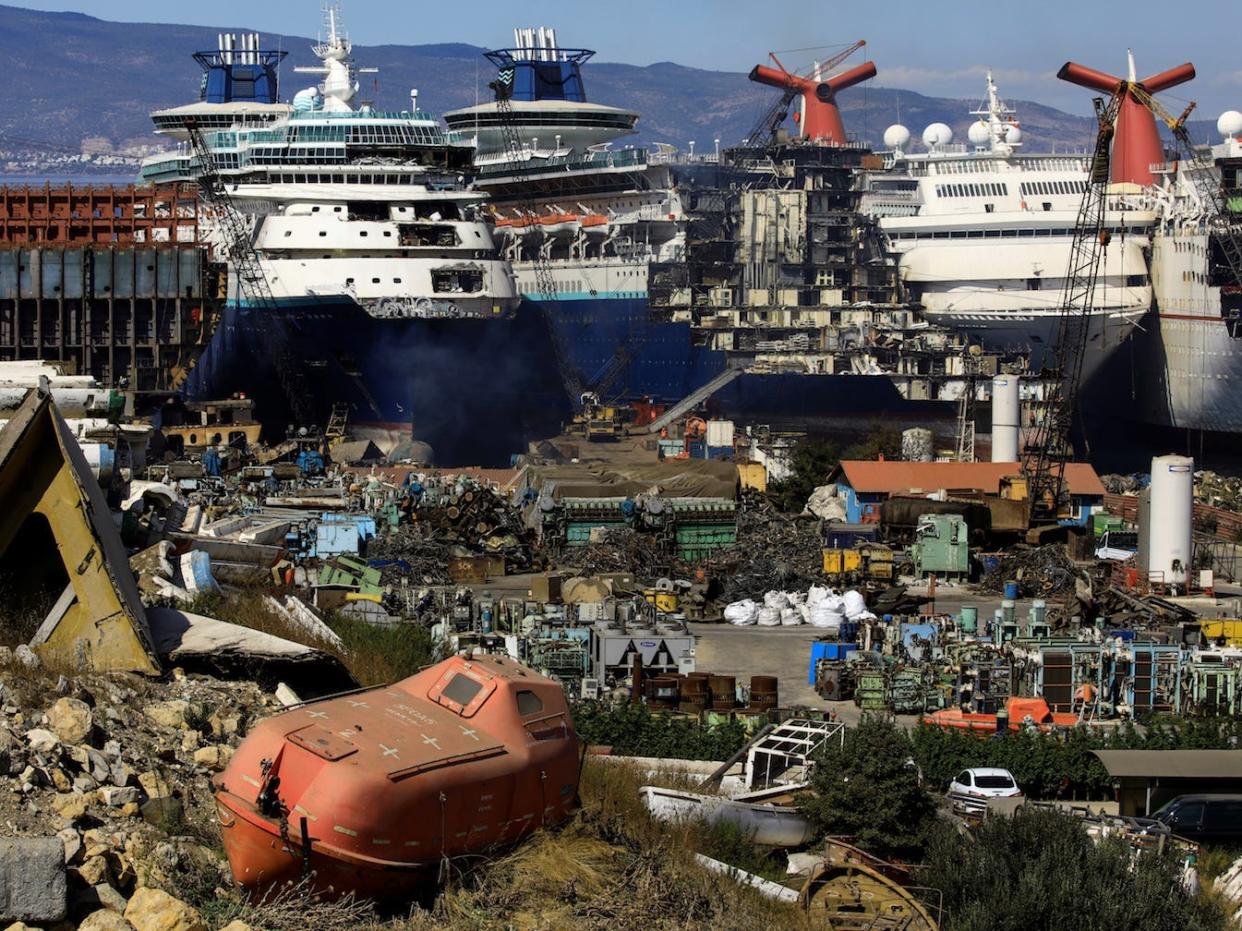
This shipyard in western Turkey has seen an influx of cruise ships due to the pandemic.
After losing billions in 2020, cruise lines like Carnival decided to sell some older ships.
Thousands of workers spend as much as a year in dangerous conditions breaking down just one ship.
The cruise line industry lost billions of dollars by the end of 2020
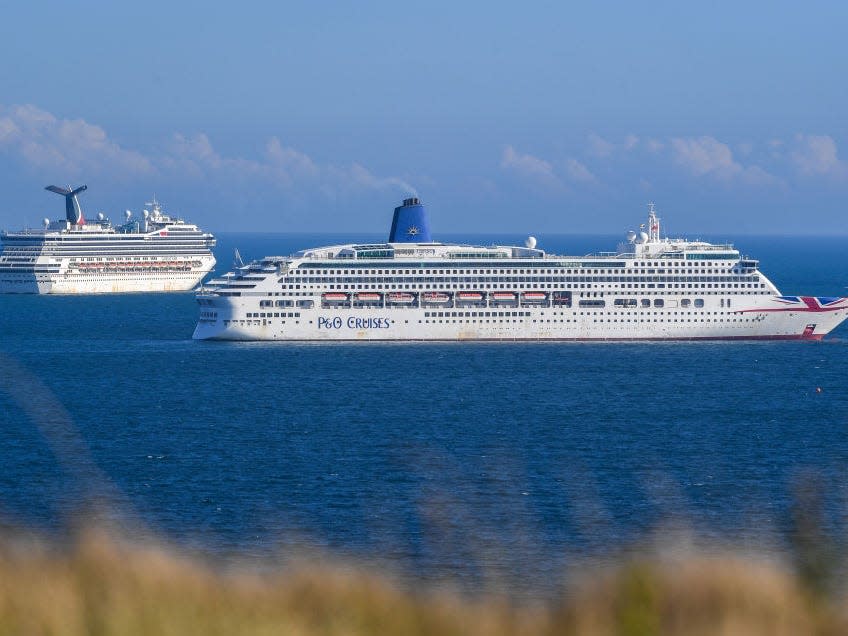
The workers at the Aliağa ship breaking yards in western Turkey usually demolished only a few dozen cargo ships a year. However, after the COVID-19 pandemic hit the cruise-line industry, the demolition site was inundated with ships.
The industry lost billions of dollars by the end of 2020, with Carnival Cruise Line losing more than $4 billion in the second quarter of 2020.
The pandemic caused Carnival, Costa, and Pullmantur Cruise Lines to send ships to be broken down in Turkey
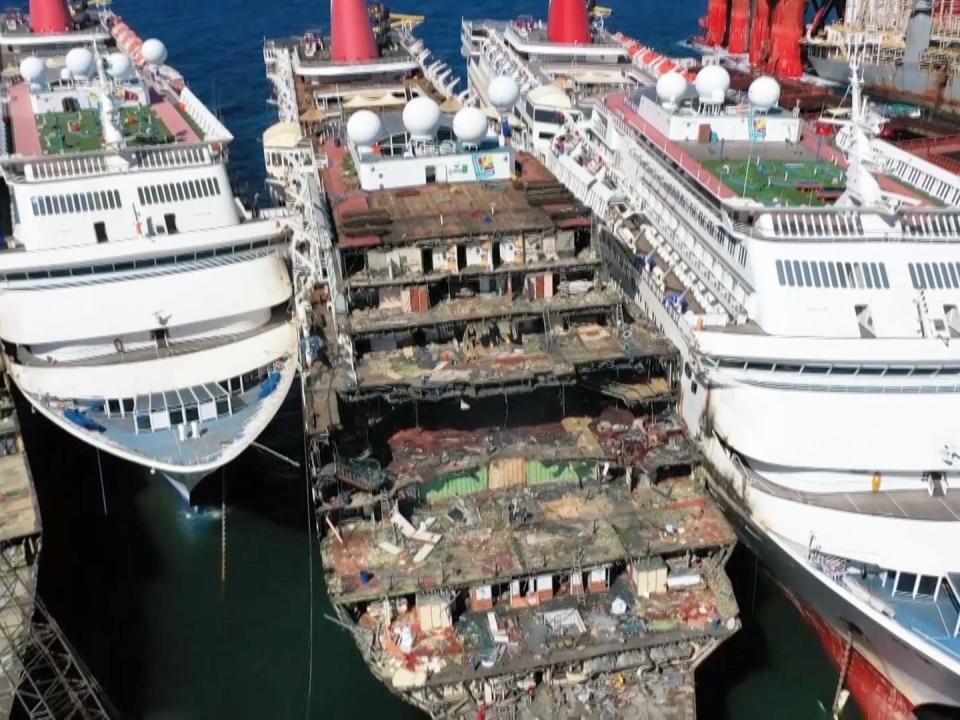
Carnival Cruise Line sold six ships for scrap, which were taken to the Aliağa ship breaking yards. The job of breaking down these large ships is one of the most dangerous and the added load has only made it harder.
"The owners could not find customers so they sent their ships to Aliağa," Emre Aras, a project manager at Avsar Gemi Sokum told Insider.
The process starts with captains coordinating with harbormasters to beach the ships in Turkey.
"Then the bowl front of the vessel is grounded on the shore while the stern still floats," Aras said.
It takes thousands of workers to break down a single cruise ship.
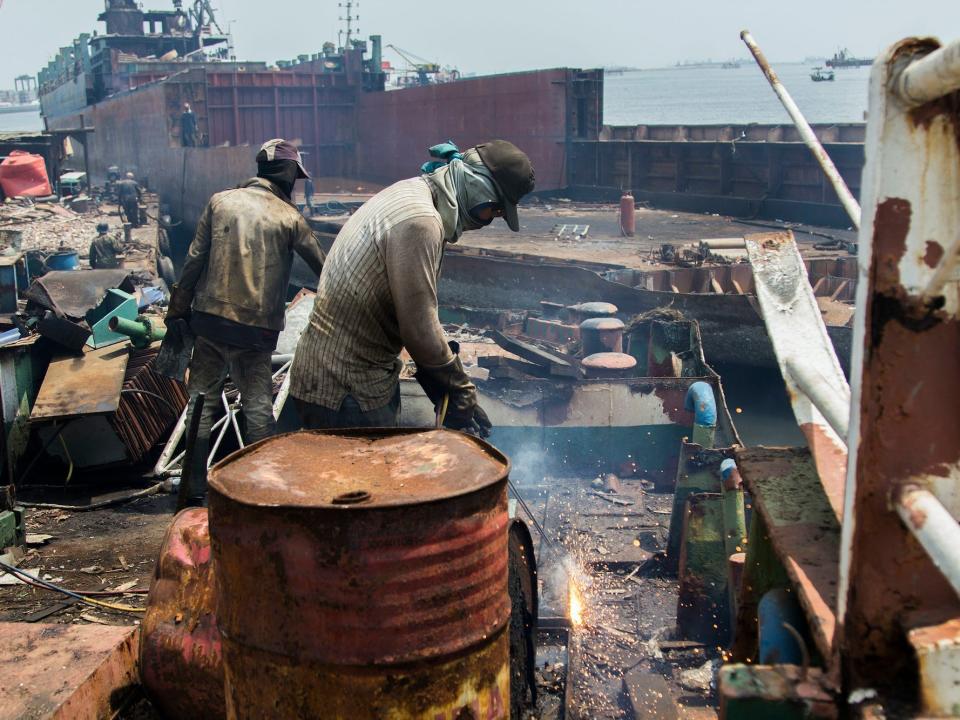
While the boat is being inspected, the crew figures out how to dismantle the vessel. Around 2,500 shipbreakers work to remove valuable material from the ships, emptying them out deck by deck mostly by hand.
"I can easily say that cruise vessels are the hardest vessel type to dismantle because, you know, there are hundreds of rooms on board," Aras said.
Workers then move on to dismantling things like pools and gyms, as well as stripping walls, windows, floors, and handrails.
The job is one of the most dangerous in the world, exposing workers to a variety of risks.
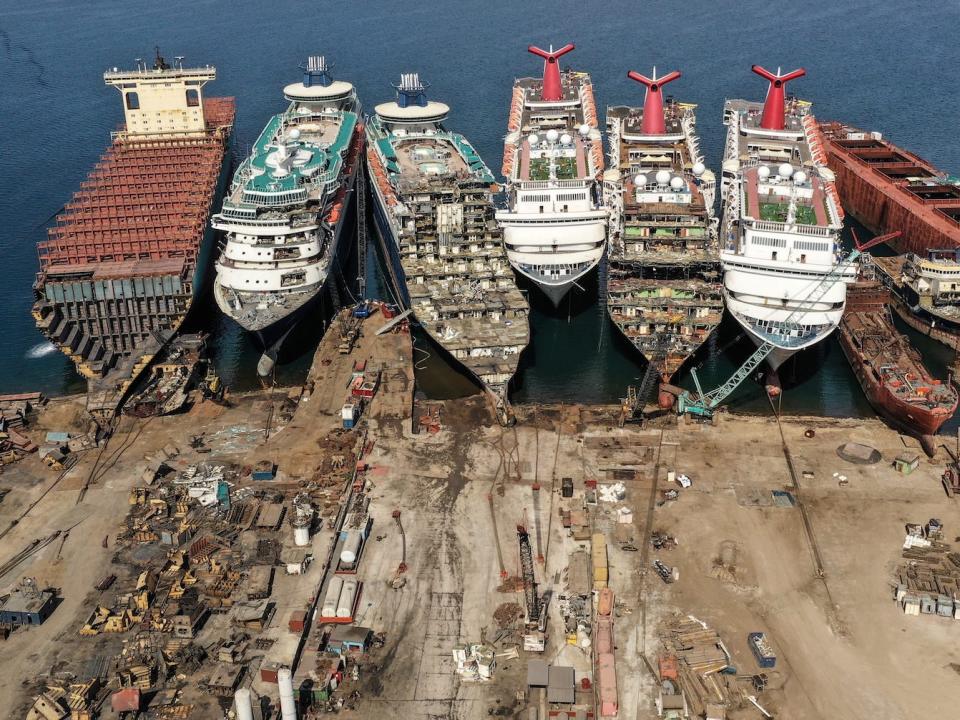
Those involved in this process risk a lot to do it, Nicola Mulinaris, a communication and policy officer at NGO Shipbreaking Platform told Insider. Mulinaris explained that workers run the risk of falling from heights, inhaling toxic gases, getting hit by falling objects, and deal with fire hazards from instruments like blow torches.
Not to mention, that these shipbreakers work in extreme weather conditions during both the summer and winter months. Additionally, any mistakes could cause damage to the environment and ruin millions of dollars worth of parts that need to be maintained in a specific condition to be reused.
The Aliağa yards have been improved in recent years to promote better safety.
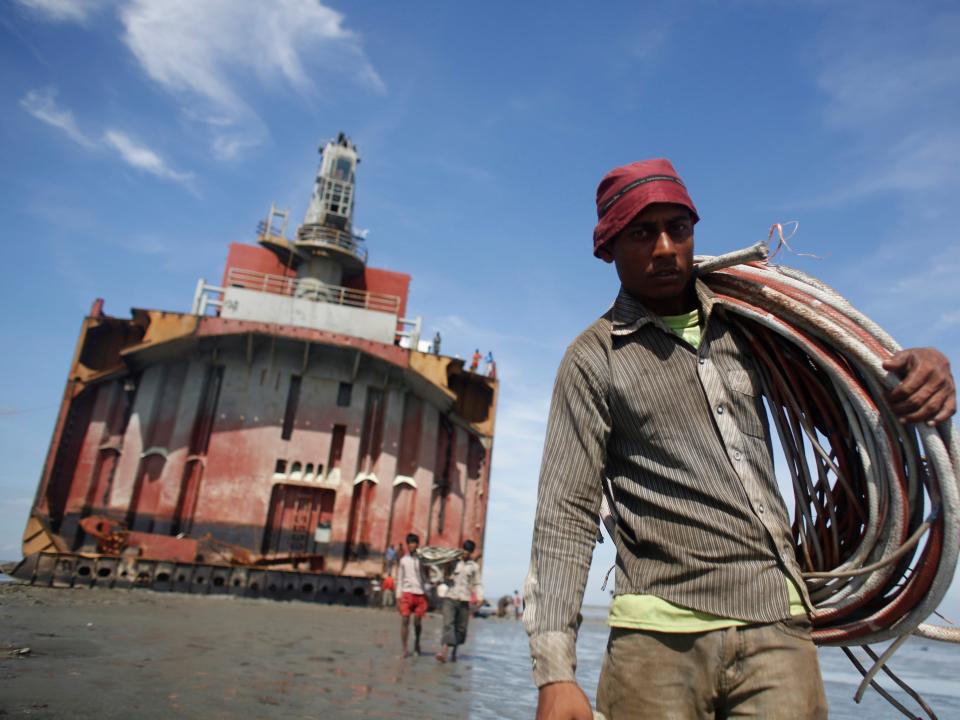
Dozens of shipyard workers have died or gotten injured in recent years in Southeast Asia. However, while conditions at the yard in Turkey were just as bad in the late 1990s by the early 2000's reports on the unsafe conditions forced changes in policy. By 2018, Aliağa yards began to comply with the European Union Ship Recycling Regulation, which meant the shipyard received improvements to limit environmental hazards while dismantling ships.
"Practices have been improved, but there are still concerns related to...the long-term impact on the health of the workers due to exposure to toxic substances," Mulinaris told Insider, adding that while some workers may not know these risks, others take the jobs for the increased pay.
Cruise ships take a long time to dismantle but can bring in huge profits

These ships could take a whole year to dismantle, Aras told Insider, howere the materials removed from them typically sell fast, and the metals from the ship could bring in $4 million in profits when they're recycled for future construction.
"You can make good money because there are lots of things on board, for second hand sales," Aras said.
See more about the ship-breaking yards
Read the original article on Insider


